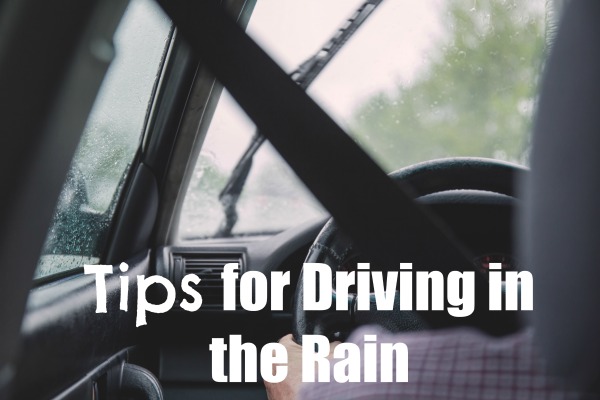Wet weather driving differs greatly from driving on a dry stretch of road. It brings with it its own set of unique challenges and obstacles, most of which can prove to be dangerous to the inexperienced and inattentive. Nearly 1.2 million traffic accidents every year are the result of wet pavements alone. To help you cope with driving in the rain better, we?ve put together this helpful article full of tips and tricks. Some you may have already heard, but they can be a great reminder nonetheless.

Helpful Tips for Driving in the Rain
Safety starts before you even set off, as there are a few things you have to check to ensure your car is ready for the rain, not just yourself. Starting with the windshield wiper blades. Worn wiper blades will either leave streaks or won?t clear the glass at all. If you?re experiencing this, replace them immediately. They are vital when it?s raining, cleaning the windshield and enabling you to see where you?re going. Check to ensure all headlights, taillights and hazards are working, and drive with the headlights on at all times. They?re especially useful in the rain, when visibility is low as is. Don?t spare them, they were meant to be used, so use them.
Tires are equally important however. The tread depth and inflation dictate how well the tire will perform in low-grip situations. You could take them to a professional, but there?s a simple test to determine if they?re worn out. Insert a quarter upside down into the tire?s grooves. If you can see above Washington?s head, it?s time to get new tires. Check the tire pressure and inflate them if the readings show lower than ideal values.
Cruise Control
Although a great feature, it?s recommended to avoid cruise control in especially heavy rain. The feature will still technically work, but you?ll be less focused on the task of operating a vehicle. By turning it off and concentrating on driving alone, you?ll be ready to respond faster to any situation should it arise.
My Favorite Tip for Driving in the Rain
Slow Down
Why risk spinning out and potentially crashing? Slow down a bit and get there safely. Speed is directly connected to the chance a car has of hydroplaning, so by reducing it, you?re reducing the chance as well. Hydroplaning occurs when a tire encounters more water than it can push away, so the water pressure in front of the wheel pushes water under the tire, effectively separating the tire from the road on a thin layer of water. The effected wheel loses any ability to steer, brake and even accelerate.
Sliding
It?s not uncommon for the amount of needed grip to exceed the amount of available grip. When that occurs, the tires lose traction and start sliding. Depending on the corner, car and road surface, you could lose the front end, the rear, or even both. It?s important to stay calm and not panic. Slamming on the brakes is the worst thing you could do, as it will upset the car?s balance spinning you out. Avoid it at all costs. It?s best to continue steering in the direction you want the car to go, slowly easing out of the slide as the car begins to get back in shape.



